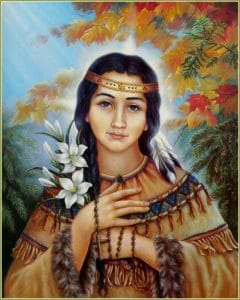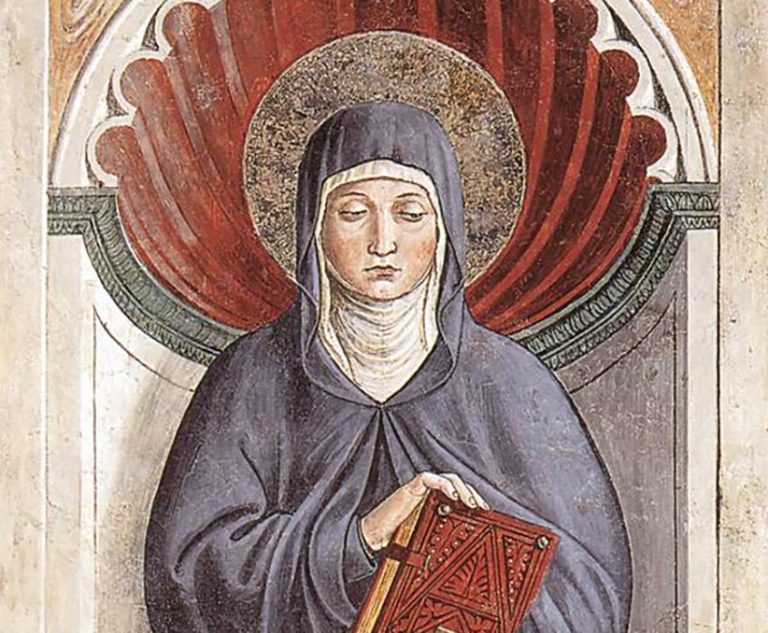
Welcome to Episode 14 of Saint of the Week. Today we shine a light on Saint Kateri Tekakwitha, known as the “Lily of the Mohawks.” She is the first Native American to be canonized, and her life remains a powerful testimony of faith, purity, and perseverance.
Early Life in a Time of Turmoil
Saint Kateri Tekakwitha was born in 1656 in Ossernenon (modern-day Auriesville, New York), in a Mohawk village. Her mother was a Christian Algonquin, and her father a Mohawk chief. When Kateri was just four years old, a smallpox epidemic swept through her village. Both of her parents and her younger brother died from the disease. Kateri survived, but the illness left her face scarred and her eyesight impaired.
Orphaned and disfigured, Kateri was taken in by her uncle, a prominent Mohawk chief. Despite her physical ailments and social isolation, she grew in inner strength and kindness. She helped with daily chores, remained quiet and respectful, and became known for her peaceful demeanor.

At the age of 19, Kateri encountered Catholic missionaries known as the Jesuits, who had come to the Mohawk territory. She was drawn to their message, particularly the life and sacrifice of Jesus Christ. Despite her family’s strong opposition, she converted to Catholicism and was baptized on Easter Sunday, April 5, 1676, taking the name Kateri, after Saint Catherine of Siena.
Her conversion brought great hardship. She was ostracized by her community, ridiculed, and even threatened. To live her faith more fully, Kateri fled her village and traveled over 200 miles on foot to a Christian Native settlement near Montreal, Canada, known as Kahnawake. There, she found peace, community, and freedom to express her devotion.
A Life of Holiness and Sacrifice
In Kahnawake, Kateri’s spirituality blossomed. She took a vow of virginity—an extraordinary decision at the time—and devoted herself to prayer, penance, and care for the sick and elderly. Her deep love for the Eucharist and the cross defined her daily life. She was often found in the chapel for hours, even in the bitter cold.

Despite her frail health, Kateri fasted regularly, practiced acts of penance, and lived a simple, humble life. Her spiritual director, Father Pierre Cholonec, wrote that she was a “pure lily” who had grown in a pagan world, blooming beautifully despite all odds.
Kateri died at the young age of 24, on April 17, 1680. Witnesses reported that shortly after her death, the scars on her face vanished, and her appearance became radiant and beautiful. Many began to invoke her intercession, and reports of miracles followed.

Canonization and Legacy
Kateri Tekakwitha was beatified by Pope John Paul II in 1980 and canonized by Pope Benedict XVI on October 21, 2012. Her feast day is celebrated on July 14 in the United States and April 17 in Canada.
She is the patron saint of Native Americans, ecologists, and the environment, symbolizing the harmony between creation and faith. Her shrine in Fonda, New York, and the Kateri Center in Kahnawake remain places of pilgrimage and reflection.
Saint Kateri Tekakwitha teaches us the power of quiet faith and perseverance. In a world that often misunderstands or rejects holiness, she stood firm in her beliefs, never wavering in her love for Christ. Her life calls us to deeper trust, inner purity, and respect for God’s creation.
Join us next week for another inspiring edition of Saint of the Week!






